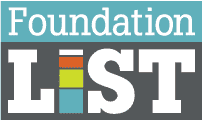As we dive into 2025, nonprofits across the United States are preparing for a year filled with both opportunities and challenges. The outlook for the economy, job market, stock market, and political landscape will undoubtedly shape the nonprofit sector in meaningful ways. Here, we examine the key trends, potential implications, and why nonprofits can remain optimistic about continued growth and impact.
The U.S. Economic Outlook in 2025
Economists project that the U.S. economy will experience moderate growth this year, which marks a slowdown compared to the rapid recovery seen in 2023 but remains stronger than the contraction experienced during the pandemic years. According to the International Monetary Fund (IMF), the U.S. GDP is forecasted to grow at a rate of 2.1%, bolstered by strong consumer spending and easing inflation rates. However, higher interest rates implemented by the Federal Reserve in 2024 to combat inflation are expected to temper economic expansion. Source.
For nonprofits, a slowing but stable economy signals a mixed bag. On one hand, cautious corporate spending may limit sponsorships and larger-scale donations. On the other, stable employment and consumer confidence can support consistent individual giving—the backbone of nonprofit fundraising.
The Job Market: Opportunities and Challenges
The job market is poised for continued resilience in 2025. The Society for Human Resource Management (SHRM) notes that unemployment is expected to remain at historic lows, around 3.5% to 3.7%. This tight labor market poses both opportunities and challenges for nonprofits. Source.
- Challenges: Nonprofits may struggle to compete with the private sector for talent as wage growth continues to rise. Organizations may need to focus on offering strong mission-driven cultures, flexible work arrangements, and professional development opportunities to attract and retain employees.
- Opportunities: On the bright side, low unemployment rates often lead to an increased sense of financial security among workers, fostering greater philanthropic giving.
Additionally, nonprofits are uniquely positioned to appeal to job seekers looking for purpose-driven careers. Platforms like ZipRecruiter emphasize that mission alignment is a key factor for many candidates in choosing nonprofit roles over corporate positions. Source.
The Stock Market and Philanthropy
The performance of the stock market remains a critical factor for high-net-worth philanthropy. Experts at Morningstar anticipate modest gains in the market this year, following a volatile 2024. A stabilized market could positively impact endowment funds and major gifts, as donors’ portfolios recover. Source.
Donor-advised funds (DAFs), which have grown exponentially over the past decade, are also set to play a pivotal role in nonprofit fundraising in 2025. As stock portfolios stabilize, more donors may use DAFs to distribute funds to nonprofits.
The Political Climate and Its Impact on Fundraising
With a new political landscape taking shape following the 2024 elections, nonprofits are navigating changes in government policies, tax laws, and public sentiment. The administration’s focus on social programs and infrastructure investment may present opportunities for grants and partnerships, particularly for organizations in housing, education, and healthcare sectors.
At the same time, shifts in tax policy could impact charitable giving. The National Council of Nonprofits highlights concerns about potential changes to itemized deductions that could influence middle-income donors. Advocacy will remain key to ensuring the sector’s voice is heard. Source.
Trends in Philanthropy and Grants
Philanthropy in 2025 is expected to reflect broader societal trends:
- Diversity, Equity, and Inclusion (DEI): Funders are increasingly prioritizing organizations that align with DEI principles. Nonprofits that embed these values into their missions and programs will be well-positioned for funding opportunities.
- Technology-Driven Giving: According to a report by Giving USA, online donations and peer-to-peer fundraising are expected to grow, driven by Gen Z and Millennials. Nonprofits must continue investing in user-friendly platforms to capture this digital giving wave. Source.
- Collaborative Grantmaking: Foundations are adopting collective impact models, emphasizing partnerships among nonprofits to address systemic issues. Organizations that demonstrate collaboration and measurable outcomes will likely see increased grant opportunities.
The Resilience of the Nonprofit Sector
Despite economic and political uncertainties, the nonprofit sector has historically shown remarkable resilience. Data from Candid indicates that charitable giving has grown 4.3% annually over the past 40 years, even during periods of economic downturn. Source.
Nonprofits’ ability to adapt, innovate, and connect deeply with their communities ensures that the sector will continue to thrive. Recent innovations, such as the adoption of AI-driven fundraising platforms, virtual volunteer engagement programs, and collaborative impact models, showcase the sector’s resilience and creativity in addressing emerging challenges. By embracing technology, focusing on employee well-being, and fostering collaboration, nonprofits can overcome challenges and seize new opportunities.
A Hopeful Vision for 2025
As we look to the future, there is much to be optimistic about. Nonprofits are uniquely equipped to address pressing societal needs, from climate change to mental health support, with creativity and compassion.
- Growth in Impact: The rising emphasis on social responsibility among individuals and corporations alike will likely lead to increased collaboration with nonprofits.
- Community Empowerment: Grassroots movements and local nonprofit initiatives are gaining momentum, driving change from the ground up.
- A Commitment to Change: The sector’s unwavering commitment to justice, equity, and opportunity inspires hope for a brighter tomorrow.
While 2025 brings its share of uncertainties, it also offers a chance for nonprofits to lead with boldness and innovation. Together, we can build a more equitable and compassionate world.


